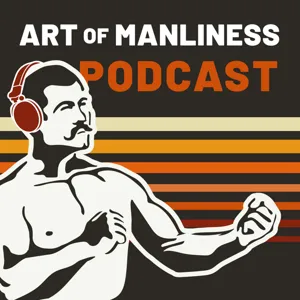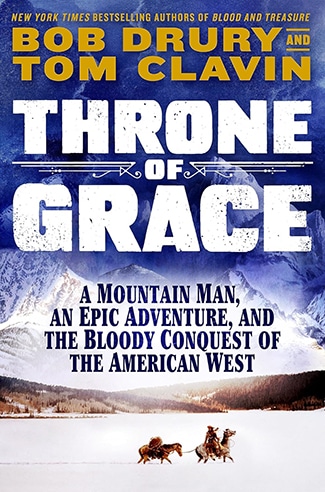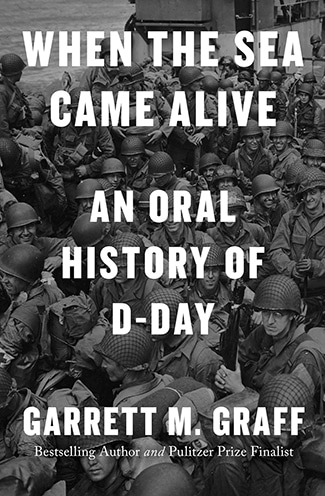Podcast Summary
The surprising turnaround at Valley Forge during the American Revolution: Despite harsh living conditions and political unrest, Valley Forge strengthened the Continental Army and set the stage for future victories
The encampment at Valley Forge during the American Revolution, a time of great hardship and despair for the Continental Army, surprisingly turned the tide of the war. Bob Drury, co-author of the new book "Valley Forge," shares how General George Washington and his troops faced numerous obstacles, including political unrest and harsh living conditions. Despite these challenges, the experience at Valley Forge ultimately strengthened the soldiers and set the stage for future victories. The common myths about this historical event, such as Washington praying for salvation, are explored, providing fresh insights into this pivotal moment in American history. Listen to the full podcast for a deeper understanding of the significance of Valley Forge.
Events leading up to Valley Forge tested Washington's leadership: Despite losses at Brooklyn Heights, White Plains, and Brandywine Creek, Washington's surprise attack at Trenton and victory at Princeton bought him time. However, his outmaneuvering at Brandywine Creek and the British discovery of the Continental Army's location due to a mistake by General Wayne led to the crucial winter at Valley Forge.
The events leading up to Valley Forge were crucial to understanding its importance. George Washington, a compromise choice for commander-in-chief, faced numerous losses, including the Battle of Brooklyn Heights and the Battle of White Plains, which led to whispers of his leadership abilities. However, his surprise attack on Trenton and victory at Princeton bought him some time. In 1777, General Howe targeted Philadelphia, and Washington was outmaneuvered at the Battle of Brandywine Creek. A mistake by General Wayne at Paoli led the British to discover his location, and the Continental Army was saved from annihilation only by the heroic actions of Generals Nathaniel Green and Anthony Wayne. This research sparked the idea for a book that uncovered new information from French archives, shedding light on the little-known details of Valley Forge's history.
Washington's Leadership During the American Revolution: Washington overcame military and political challenges by manipulating the situation, sending aides to pressure Congress for supplies, and securing a major victory at Saratoga.
During the American Revolution, General Washington faced significant challenges both militarily and politically. After the failed attempt to retake Philadelphia at the Battle of Germantown, Washington's leadership was questioned by influential figures like John Adams and Dr. Benjamin Rush. The army was in dire condition, with soldiers lacking basic necessities, leading to a crisis. Washington skillfully manipulated the situation by sending young aides like Alexander Hamilton to the camp committee in York to pressure Congress for supplies. Meanwhile, the American forces scored a significant victory at Saratoga, capturing 5,000 British and Hessian soldiers, which boosted morale and turned the tide of the war. Despite facing adversity, Washington's leadership and political savvy kept the Continental Army together and ultimately led to the eventual victory in the Revolution.
Struggles to create a functional military structure during the winter at Valley Forge: Despite hardships and challenges, Washington's leadership and soldiers' loyalty kept the Continental Army together during the winter at Valley Forge, highlighting the importance of effective military leadership in a new nation.
During the winter at Valley Forge, the Continental Army was in dire straits due to the new nation's lack of experience in creating and managing a standing army and supply system. General Gates, seeing an opportunity, lobbied to become commander-in-chief but failed to gain the necessary support. Instead, he was given the presidency of the Board of War, which he used to issue orders to the field, challenging Washington's authority. However, Washington's leadership and the soldiers' loyalty kept the army together amidst harsh conditions and numerous desertions. Despite the challenges, the delegates at Valley Forge began to realize the importance of Washington's presence and leadership in keeping the army together. The United States, in its infancy, struggled to create a functional military structure, leading to the hardships faced by the Continental Army during the winter at Valley Forge.
Misconceptions about Winter at Valley Forge: Despite mild winter conditions and abundant food sources, Continental soldiers often went hungry due to local farmers selling produce to the British. 750 free black soldiers were present, and General Green's supply line reorganization was vital for the army's survival.
The winter at Valley Forge was not as harsh as commonly believed. Contrary to popular myth, it was one of the mildest winters on record in the area. Additionally, there was an abundance of food available from the surrounding farmlands, but the Continental soldiers often went without due to local farmers selling their goods to the British for better payment. Another surprising fact is that there were 750 free black soldiers at Valley Forge. Despite these misconceptions, General Green's restructuring of the army's supply line was crucial for the survival and eventual success of the Continental Army.
Last integrated American army during the American Revolution: During the American Revolution, black soldiers were promised freedom if they fought, creating the last integrated American army until the Korean War. Washington's inner circle included influential figures like Hamilton and Wayne, and the young Marquis de Lafayette, who became Washington's adopted son and a crucial ally in gaining French support.
During the American Revolution, black soldiers were promised freedom if they fought alongside white soldiers, creating the last integrated American army until the Korean War. Washington's inner circle included the young Marquis de Lafayette, who became Washington's adopted son and a crucial ally in gaining French support for the American cause. Lafayette, an idealistic French aristocrat, shared core values with other influential figures like Hamilton and Wayne, making them a productive generation of statesmen. Washington saw himself in Lafayette and valued his enthusiasm and height, making their bond personal and strategic.
George Washington's Inner Circle: Lafayette and Lawrence: George Washington's success as a military leader and later President was significantly influenced by key figures in his inner circle, including Marquis de Lafayette and John Lawrence, whose military abilities and potential for great leadership were evident.
George Washington relied heavily on the support and leadership of key figures in his inner circle, such as Marquis de Lafayette and John Lawrence. Washington couldn't afford to lose Lafayette due to the political and military significance he held, but he also couldn't stop him from pursuing his own actions. Lawrence, a 23-year-old lawyer and son of a wealthy South Carolina family, was another crucial figure in Washington's circle. He volunteered for the Continental Army and quickly became friends with Washington and Alexander Hamilton. Lawrence demonstrated his military abilities during the battles of Brandywine Creek and Germantown, and his potential for great leadership was evident. Tragically, Lawrence was killed in action during the final stages of the war, just weeks before the British evacuated Charleston. Had he survived, Lawrence may have become George Washington's first Secretary of State. Washington's inner circle played a vital role in his success as a military leader and eventual President, and their contributions are often overlooked.
The spirit of Valley Forge was not just Washington's prayer, but young leaders and Baron von Steuben's military training.: Young leaders and Baron von Steuben's military training transformed the Continental Army during their six months at Valley Forge, leading them to start winning battles.
During the darkest days of the Continental Army at Valley Forge, it was not Washington's prayer in the snow that kept their spirits up, but rather the young leaders like Lafayette and Hamilton, and the arrival of the experienced military commander Baron von Steuben. Washington, although not a very religious man, was deeply influenced by these figures and the determination of his soldiers. The army spent six months at Valley Forge, and it was von Steuben's innovative military training methods that transformed the Continental Army, leading them to start winning battles after their departure in June 1778.
Baron von Steuben's Transformation of the American Army: A Prussian officer, Baron von Steuben, revolutionized the American army from a disorganized militia into a disciplined fighting force through rigorous training and drilling at Valley Forge.
Baron von Steuben, a Prussian officer, transformed the American army from a disorganized group of militias into a disciplined fighting force during the Revolutionary War. Initially, the Americans were hesitant to accept him due to his foreign status, but they soon realized his expertise in drilling and training. Despite not holding the rank of general, von Steuben's influence spread throughout the army as Washington's personal choice for training the soldiers at Valley Forge. He demonstrated his techniques through hands-on instruction, even getting down in the muck and mire with the men. His no-nonsense approach, though harsh, was effective, and his attention to detail helped instill a sense of professionalism. When making mistakes, soldiers faced von Steuben's wrath, but with the help of translators like Lafayette and Hamilton, they learned valuable lessons. Von Steuben's impact on the American military cannot be overstated, as he played a crucial role in preparing the army for future victories.
Baron von Steuben's Transformation of the Continental Army: Baron von Steuben's military training at Valley Forge turned a disorganized militia into a disciplined fighting force, boosting morale and enabling the Continental Army to emerge as a formidable military force, shaping the outcome of the American Revolution.
Baron von Steuben played a crucial role in transforming the Continental Army from a disorganized militia into a disciplined and effective fighting force during their winter encampment at Valley Forge. He not only taught the soldiers essential military drills and tactics but also boosted their morale and motivation. Washington's last letter before resigning as commander-in-chief was to Baron von Steuben, expressing his gratitude for this remarkable achievement. Despite the harsh conditions and high mortality rate due to disease and malnutrition, the soldiers' unwavering desire for freedom and an independent United States, along with the guidance of leaders like Washington, von Steuben, and others, enabled them to emerge from Valley Forge as a formidable military force. This turning point not only shaped the outcome of the American Revolution but also left a lasting impact on the soldiers' spirit and determination.
George Washington's Determination During the Battle of Monmouth: George Washington's unwavering determination and leadership skills turned a retreat into a victory during the Battle of Monmouth, despite extreme heat and the collapse of his horse.
During the Battle of Monmouth in 1778, General George Washington found himself leading troops who had become accustomed to retreating, rather than attacking. Despite the impending threat of 10,000 British soldiers, Washington rode up and down the front lines, trying to turn the retreat into an attack. He faced numerous challenges, including extreme heat and the collapse of his horse, but he persisted, urging his soldiers to fight with him. Eventually, they rallied and turned the tide of the battle. This incident highlights Washington's unwavering determination and leadership skills, even in the face of adversity. To learn more about this pivotal moment in American history, check out the book "Valley Forge" by Bob Drury and Tom Clavin, available on Amazon.com and in bookstores everywhere. For more information about Bob Drury and his work, visit rfxdrury.com.










